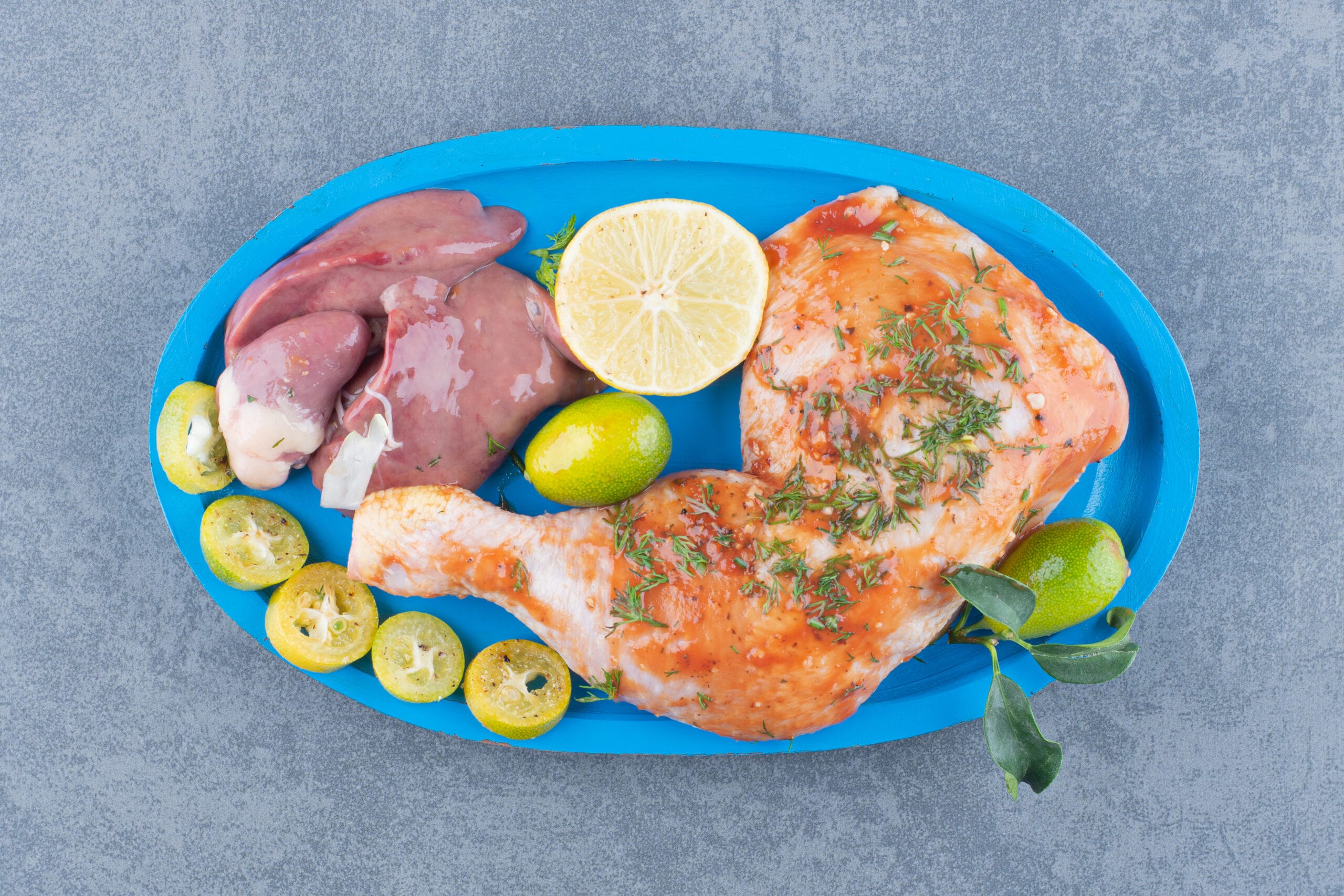Benefits of brined chicken: Best Recipe in 2025
Table of Contents
Benefits of brined chicken
Looking to make your chicken dishes better? Learning how to brine chicken can change your cooking game. Brining involves soaking poultry in a salt solution. This boosts its flavor, moisture, and texture.
So, what is brining chicken? It’s a simple yet effective way to make meat juicier and tastier. By soaking chicken in a salt water mix, you can make it more delicious.
Professional chefs use brining to make their dishes stand out. They use wet or dry brining to achieve a juicy, flavorful chicken. This technique helps you create a dish that will wow your family and friends.

Key Takeaways
- Brining enhances chicken’s natural moisture and flavor
- Salt solutions help break down protein structures
- Both wet and dry brining methods are effective
- Brining works with various chicken cuts
- Proper brining technique improves overall meat quality
Understanding What Brining Chicken Means
Brining chicken is a cooking method that makes ordinary chicken taste amazing. It turns simple poultry into a juicy, flavorful dish. Learning about brining chicken reveals a simple yet effective way to prepare meat.
A brine recipe involves soaking chicken in a saltwater solution. This solution works magic on the meat’s cells. The science behind brining is both fascinating and easy to understand.
The Science of Salt and Moisture
When you make a brine recipe, salt does something amazing:
- It breaks down protein structures
- Helps meat keep more moisture
- Boosts the meat’s natural flavors
Wet vs. Dry Brining Techniques
Knowing about brining chicken means understanding two main methods:
- Wet Brining: Soaking chicken in a saltwater solution
- Dry Brining: Sprinkling salt on the chicken’s surface
“Salt is the secret weapon that turns good chicken into great chicken.” – Professional Chef
Both methods have their own benefits. You can pick the one that fits your cooking style and schedule.
Simple Chicken Brine: Essential Ingredients and Proportions
Making a perfect chicken brine is easy. It can turn your chicken into something amazing with just a few ingredients and the right steps.
- Water
- Kosher salt
- Optional flavor enhancers
For a basic brine, use this ratio:
| Ingredient | Quantity |
|---|---|
| Water | 4 cups |
| Kosher Salt | 1/4 cup |
You can add more ingredients to make your brine even better. Think about adding:
- Brown sugar (2-3 tablespoons)
- Fresh herbs like rosemary or thyme
- Whole peppercorns
- Garlic cloves
“The secret to a perfect simple chicken brine is balance – not too salty, not too weak.”
Remember, salt is key in a brine. It breaks down proteins, keeping the chicken moist. Always mix the salt into warm water until it’s dissolved. Then, let the brine cool to room temperature.
To get the best results, put your chicken in the brine. Then, refrigerate it for 1-4 hours. The time depends on the chicken’s size and cut.

Why Your Chicken Needs Brining
Brining your chicken can turn it from ordinary to amazing. It makes your cooking better, making your meals juicy, flavorful, and tender.
Brining chicken is more than a cooking trick. It’s a way to solve common problems with chicken. It’s a must-have in your kitchen.
Moisture Retention Benefits
Brining chicken keeps it moist. The salt solution helps the meat hold water, preventing it from drying out. This means:
- Chicken stays up to 300% more juicy
- Reduced risk of overcooking
- Consistent texture across different cuts
Flavor Enhancement Capabilities
Brining does more than keep chicken moist. It also makes flavors penetrate deeper. The salt solution lets seasonings soak into the meat, enhancing the taste.
| Brining Method | Flavor Intensity | Moisture Increase |
|---|---|---|
| Wet Brine | High | 25-40% |
| Dry Brine | Medium-High | 15-30% |
Texture Improvement Results
Brining changes chicken’s texture in amazing ways. Salt breaks down proteins, making the meat tender and soft.
“Brining is like a culinary secret weapon that guarantees perfectly cooked chicken every time.” – Professional Chef Recommendation
Adding brining to your cooking will make your chicken taste like it’s from a restaurant. It will impress everyone.
Time-Saving Tips for Brining Chicken
Brining chicken doesn’t have to take up a lot of time. With a few smart tips, you can make your brine recipe quicker and save kitchen time.
Start by preparing your brine ahead of time. Here are some quick tips to make brining easier:
- Prep brine solutions in advance and refrigerate
- Use large zip-lock bags for easy marinating
- Create concentrated brine for faster absorption
“The secret to great brining is planning ahead and working smarter, not harder.” – Professional Chef
The brining time depends on the chicken cut size. Here’s a quick guide:
| Chicken Cut | Brining Time | Recommended Method |
|---|---|---|
| Chicken Breasts | 30-60 minutes | Concentrated salt solution |
| Whole Chicken | 4-8 hours | Standard brine recipe |
| Chicken Thighs | 1-2 hours | Quick brine method |
For busy cooks, a simple chicken brine can be made in minutes. Keep basic ingredients like kosher salt, water, and optional aromatics ready.
- Quick tip: Use cold water for faster salt dissolution
- Store pre-mixed brine in sealed containers
By using these time-saving tips, you’ll make brining quick and easy. It will become a fast kitchen skill.
Common Brining Mistakes to Avoid
Brining chicken can make your cooking better, but many mistakes can ruin it. Knowing how to brine chicken well means paying close attention to details.
When you brine chicken, being precise is key. Mistakes can make a dish that could be great into one that’s not.
Avoiding Oversalting Pitfalls
Oversalting is a big issue when brining chicken. Too much salt makes the meat taste too salty and become tough. Here’s how to avoid it:
- Use precise salt-to-water ratios
- Measure ingredients carefully
- Stick to recommended brining times
Timing Troubles in Brining
Timing is very important in brining. Brining for too long or too short can affect the meat’s quality:
- Small cuts: 30 minutes to 2 hours
- Whole chickens: 8-12 hours maximum
- Always refrigerate during brining
Temperature Control Challenges
Keeping the right temperature is key for safety when brining chicken. Bacteria grow in warm places, so keep the brine cold.
“The key to safe brining is keeping the chicken below 40°F throughout the process.” – Professional Chef Recommendation
By avoiding these common mistakes, you’ll get better at brining chicken. You’ll make delicious, juicy meals every time.
Best Cuts of Chicken for Brining
Not all chicken cuts are the same when it comes to brining. Knowing which parts work best can make your simple chicken brine amazing.
Some chicken cuts soak up brine better, giving you better taste and texture. Here are the top cuts for brining:
- Chicken Breasts: Lean and prone to drying, these cuts benefit most from brining
- Whole Chickens: Perfect for achieving uniform seasoning and moisture
- Chicken Thighs: Higher fat content allows for deeper flavor absorption
When picking cuts for your simple chicken brine, think about the meat’s characteristics. Thicker cuts need longer brining, while thinner ones need shorter times to avoid oversalting.
“The key to perfect brined chicken is understanding each cut’s unique properties.” – Professional Chef
Bone-in cuts keep moisture better and taste richer during brining. Boneless cuts are good too but need careful timing to avoid being too salty.
Your brining success depends on choosing the right cut and brining method. Try different chicken parts to find your best brining way.
How Brining Affects Cooking Time and Temperature
Brining chicken changes how you cook by affecting heat and meat interaction. It makes a big difference in cooking compared to old methods.
Brining creates a moisture barrier that changes cooking. The salt solution keeps proteins wet. This means brined chicken cooks evenly and fast.
Adjusting Cooking Methods
Different cooking methods need changes for brined chicken:
- Roasting: Reduce cooking time by 20-25%
- Grilling: Use medium-high heat and shorter intervals
- Frying: Lower oil temperature by 10-15 degrees
Temperature Guidelines
Knowing internal temperatures is key for perfect brined chicken. Here are the temperature targets:
| Chicken Cut | Safe Internal Temperature | Recommended Cooking Approach |
|---|---|---|
| Breast | 165°F | Quick, even heating |
| Thighs | 175°F | Slower, more gradual cooking |
| Whole Chicken | 170°F | Balanced, indirect heat |
“Brining is like a culinary insurance policy for moist, flavorful chicken.” – Professional Chef
Pro tip: Always use a meat thermometer to ensure your brined chicken reaches the perfect temperature without overcooking.
Flavor Variations for Brined Chicken
Turning a simple chicken brine into a masterpiece is easier than you think. A basic brine can become a flavor adventure with a few ingredients. Your chicken will soak up unique tastes, making meals special.
Exploring flavor variations lets you tailor your brine to your taste. Try these exciting combinations:
- Citrus Herb Brine
- Lemon zest
- Fresh rosemary
- Thyme sprigs
- Spicy Southwest Brine
- Chipotle peppers
- Cumin
- Smoked paprika
- Asian-Inspired Brine
- Ginger
- Garlic
- Star anise
When making your brine, salt is key. Herbs and spices add depth, making chicken amazing.
“The secret to incredible chicken is not just in cooking, but in preparing it with thoughtful, flavorful brines.” – Professional Chef
| Brine Style | Key Ingredients | Best Paired With |
|---|---|---|
| Mediterranean | Oregano, Olive Oil, Lemon | Grilled Chicken |
| Cajun | Cayenne, Black Pepper, Garlic | Roasted Chicken |
| Apple Cider | Apple Cider, Cinnamon, Brown Sugar | Baked Chicken |
Try these flavors to find your favorite chicken brine. Each mix offers a unique taste, making meals unforgettable.
Storage and Food Safety Guidelines
When you’re working with brine chicken, food safety is key. Proper storage and handling are crucial to prevent foodborne illnesses and ensure the quality of your meat.
Knowing how to store brine chicken safely is important. Refrigeration is your main defense against bacterial growth during brining.
Safe Brining Temperatures
Keeping the right temperature is critical when brining chicken. Follow these essential guidelines:
- Always keep chicken and brine solution below 40°F (4°C)
- Use a refrigerator or cooler with ice packs to maintain consistent temperature
- Never brine chicken at room temperature
Maximum Storage Duration
The brining time depends on the chicken’s size and cut. Here’s a quick reference:
| Chicken Cut | Maximum Brining Time |
|---|---|
| Whole Chicken | 8-12 hours |
| Chicken Breasts | 2-4 hours |
| Chicken Thighs | 4-6 hours |
“Food safety is not a choice, it’s a responsibility.” – Professional Chef
Remember to rinse your brined chicken thoroughly before cooking. Discard any unused brine. Proper handling ensures delicious and safe meals every time.
Health Considerations When Brining Chicken
Brining chicken can make your meals taste great, but it’s important to know its health effects. When you brine chicken, you need to watch how much salt you’re eating.
A basic chicken brine adds a lot of salt to your meat. This makes it taste better, but it might not fit your diet. Let’s look at the health side of brined chicken.
- Standard brines can increase sodium by 300-400 mg per serving
- People with high blood pressure should keep an eye on their salt intake
- There are low-sodium brining options for those watching their health
To handle the salt in brined chicken, you can:
- Try brines with less salt
- Eat smaller portions
- Pair your meal with low-sodium sides
“Moderation and awareness are key to enjoying brined chicken while maintaining a healthy diet.” – Nutrition Expert
| Brining Method | Sodium Content | Health Consideration |
|---|---|---|
| Traditional Wet Brine | High | Best for occasional use |
| Low-Sodium Brine | Moderate | Suitable for regular consumption |
| Dry Brining | Low | Recommended for sodium-sensitive individuals |
Even with the salt, brined chicken has its perks. It keeps meat moist, so you might not need as much oil when cooking. This could help lower your calorie count.
Remember, everyone’s diet is different. Talking to a doctor can help you choose the right foods for your health goals.
Conclusion
Brining chicken makes ordinary meals into something special. It’s all about the science of salt and keeping meat moist. With a great brine recipe, even simple chicken can taste amazing.
Brining chicken is all about technique and creativity. It works for chicken breasts, thighs, or whole birds. You’ll learn to make meat juicier and more flavorful, impressing everyone.
Don’t worry if it takes time to get it right. Start with easy brine recipes and try new things. Each try will teach you more about cooking and help you grow as a chef.
Brining is a skill that will help you in many recipes. With patience and care, you’ll make delicious chicken dishes. Your kitchen adventures are just starting!
FAQ
What exactly is brining chicken?
Brining chicken means soaking it in a saltwater solution. This makes the meat juicier and more flavorful. The salt helps the meat keep more water, making it tender and tasty.
How long should I brine chicken?
The brining time varies based on the chicken’s size and cut. Bone-in pieces need 4-8 hours, while boneless breasts can brine for 1-2 hours. Be careful not to brine too long, as it can make the meat too salty.
What’s the basic ratio for a simple chicken brine?
Use 1/4 cup of salt for every quart of water. You can add sugar, herbs, or spices for extra flavor. The key is to keep the salt and water balanced to avoid over-salting.
Can I brine frozen chicken?
No, thaw chicken before brining. Brining frozen chicken can cause uneven salt absorption and safety issues. Always thaw chicken completely before brining.
Is brining safe for people watching their sodium intake?
Brined chicken has more sodium than unbrined. If you’re watching your salt intake, use less salt in the brine or try dry brining. You can also talk to a nutritionist about brined chicken in your diet.
What’s the difference between wet and dry brining?
Wet brining involves soaking chicken in a saltwater solution. Dry brining uses salt and seasonings rubbed onto the chicken’s surface. Wet brining adds moisture, while dry brining can make the skin crispier.
Can I reuse a brine solution?
No, never reuse a brine solution. Once chicken has been in the brine, the solution is contaminated. Always make a fresh brine for each batch of chicken to ensure safety.
What are the best cuts of chicken for brining?
Whole chickens, breasts, and thighs are great for brining. These cuts benefit from the moisture and flavor brining offers. Chicken breasts, in particular, get extra moisture from brining, helping them stay juicy during cooking.

